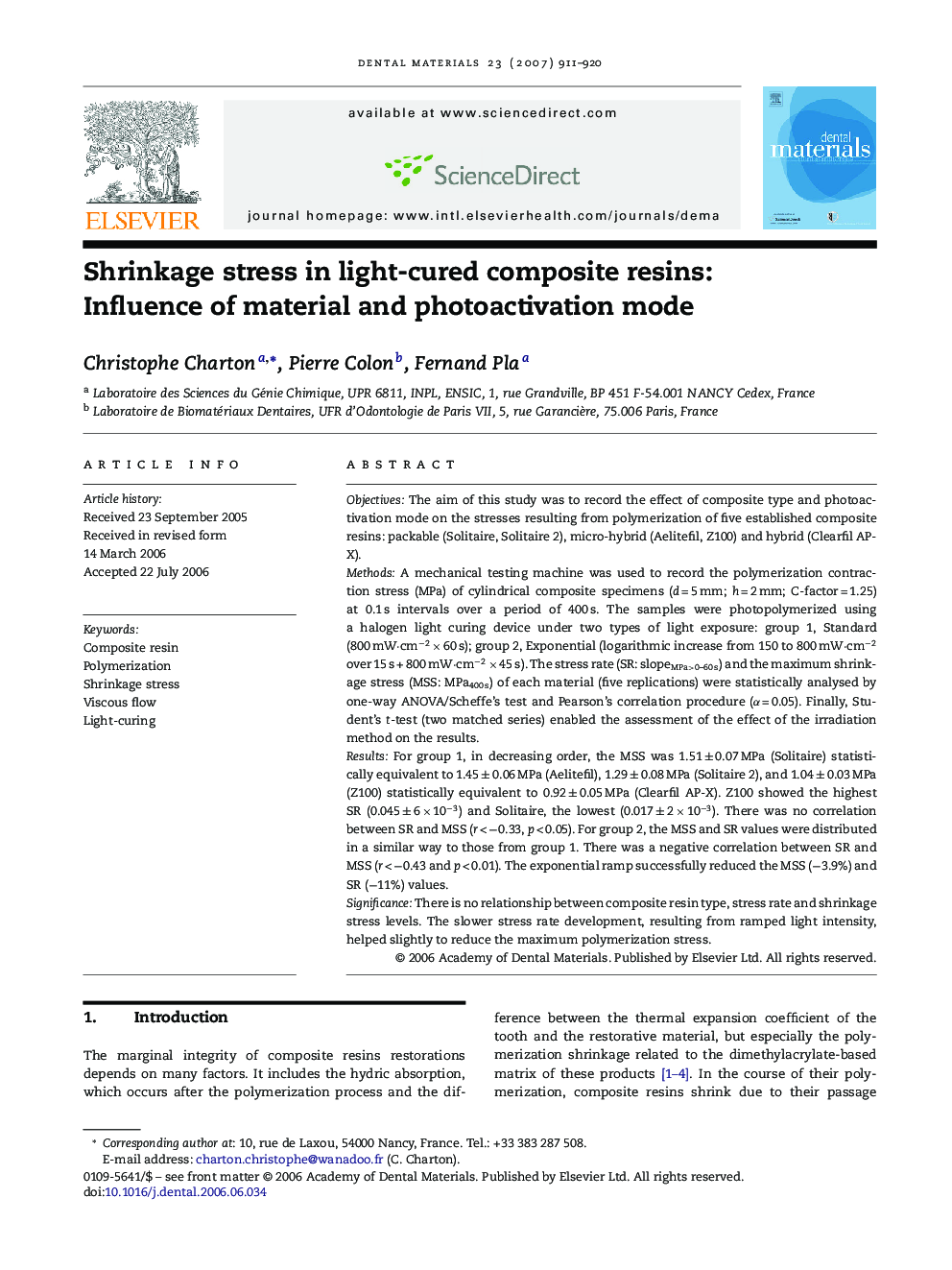| کد مقاله | کد نشریه | سال انتشار | مقاله انگلیسی | نسخه تمام متن |
|---|---|---|---|---|
| 1423306 | 986504 | 2007 | 10 صفحه PDF | دانلود رایگان |

ObjectivesThe aim of this study was to record the effect of composite type and photoactivation mode on the stresses resulting from polymerization of five established composite resins: packable (Solitaire, Solitaire 2), micro-hybrid (Aelitefil, Z100) and hybrid (Clearfil AP-X).MethodsA mechanical testing machine was used to record the polymerization contraction stress (MPa) of cylindrical composite specimens (d = 5 mm; h = 2 mm; C-factor = 1.25) at 0.1 s intervals over a period of 400 s. The samples were photopolymerized using a halogen light curing device under two types of light exposure: group 1, Standard (800 mW·cm−2 × 60 s); group 2, Exponential (logarithmic increase from 150 to 800 mW·cm−2 over 15 s + 800 mW·cm−2 × 45 s). The stress rate (SR: slopeMPa>0–60 s) and the maximum shrinkage stress (MSS: MPa400 s) of each material (five replications) were statistically analysed by one-way ANOVA/Scheffe's test and Pearson's correlation procedure (α = 0.05). Finally, Student's t-test (two matched series) enabled the assessment of the effect of the irradiation method on the results.ResultsFor group 1, in decreasing order, the MSS was 1.51 ± 0.07 MPa (Solitaire) statistically equivalent to 1.45 ± 0.06 MPa (Aelitefil), 1.29 ± 0.08 MPa (Solitaire 2), and 1.04 ± 0.03 MPa (Z100) statistically equivalent to 0.92 ± 0.05 MPa (Clearfil AP-X). Z100 showed the highest SR (0.045 ± 6 × 10−3) and Solitaire, the lowest (0.017 ± 2 × 10−3). There was no correlation between SR and MSS (r < −0.33, p < 0.05). For group 2, the MSS and SR values were distributed in a similar way to those from group 1. There was a negative correlation between SR and MSS (r < −0.43 and p < 0.01). The exponential ramp successfully reduced the MSS (−3.9%) and SR (−11%) values.SignificanceThere is no relationship between composite resin type, stress rate and shrinkage stress levels. The slower stress rate development, resulting from ramped light intensity, helped slightly to reduce the maximum polymerization stress.
Journal: Dental Materials - Volume 23, Issue 8, August 2007, Pages 911–920